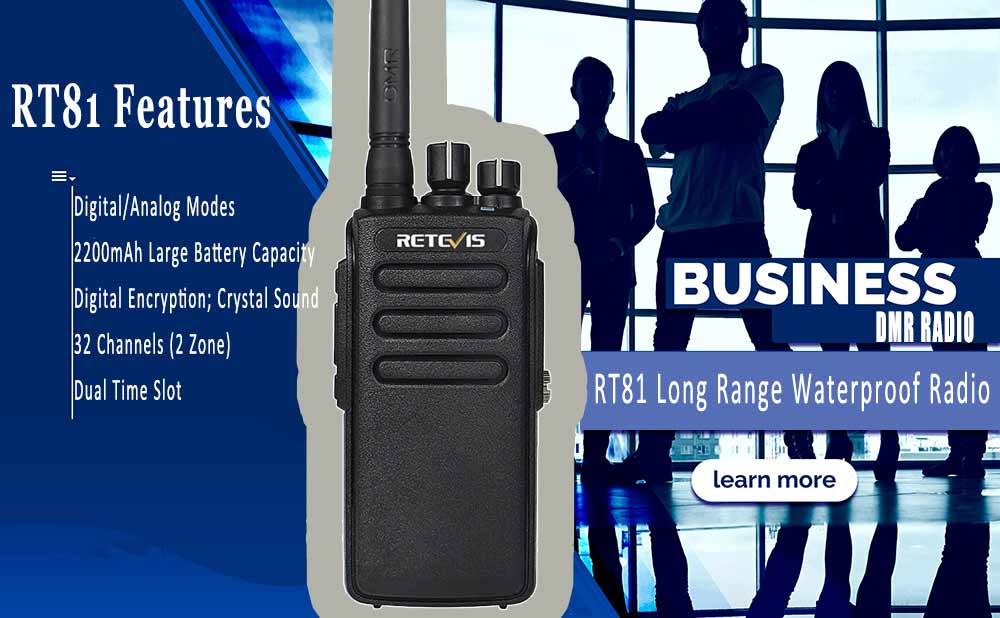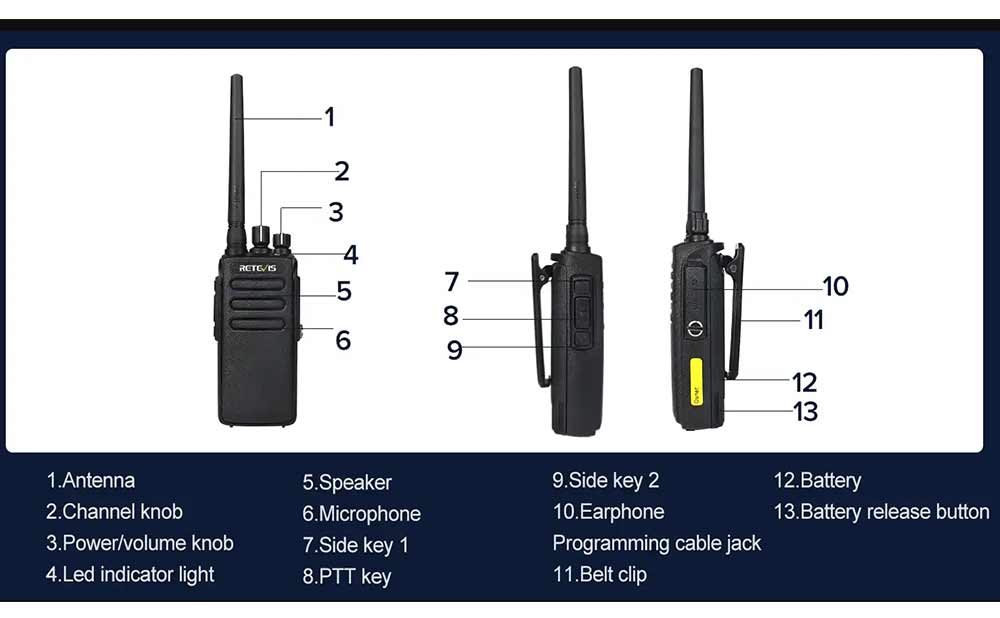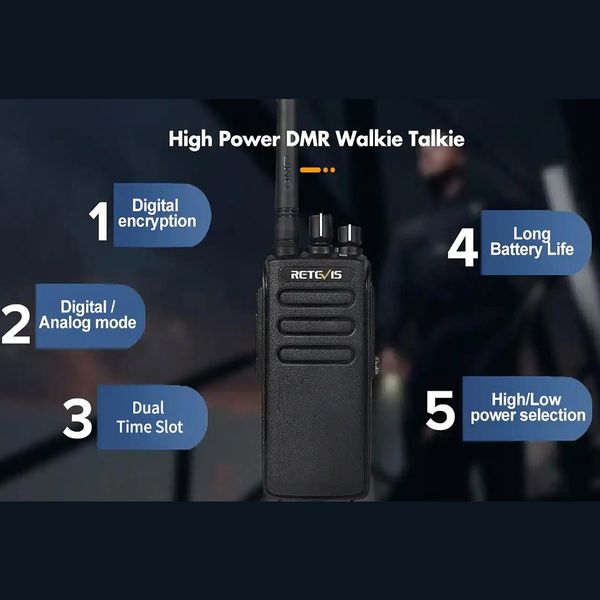A Comprehensive Look at the Retevis RT81 Business Handheld Radio

A Comprehensive Look at the Retevis RT81 Business Handheld Radio
Retevis RT81 long range waterproof radio as an hot product has a lot of lovers. Let's talk more about the RT81 walkie tlakei today.
Among a portion of people I know who love the RT81, a large portion of them love the look of the RT81. Here's a detailed look at the RT81.


Key Advantages and Features
The six main advantages of the digital machine as well as functional features

1.IP67 waterproof
IP67 waterproof rating, able to cope with daily weather changes and light wading work.
2. Digital-analog dual mode
It can better realize the interoperability with analog and digital machines.
3. High and low power selectable
According to your working environment and working range needs to choose the most suitable power to realize the clearest call.
4. Wide range of scenarios
RT81 as the most basic digital radio can meet the needs of digital communication in many business environments. For example, security, campus, large events, farms and outdoor group activities.
5. Individual and Group Calling
These features are primarily designed to meet the needs of departmental coordination.
6. Ruggedized Shell Material
Able to withstand accidental drops and impacts, long-lasting and durable to bring more cost-effective.
More detailed specifications
| Model | Retevis RT81 |
| Frequency | UHF: 400-470MHz / VHF: 136-174MHz |
| Mode | Digital/Analog |
| Power | 10W |
| Channel capacity | 32(2 Zone, 16 channel per zone) |
| Zone | 2 |
| Working voltage | 7.4V |
| Working temperature | -30℃~+60℃ |
| Storage temperature | -40℃~+60℃ |
| Continuous working time | Analog:15 hours,Digital:25 hours |
| Battery capacity | 2200mAh |
| Weight(include battery) | 9.32oz/264g |
| Radio size(include battery) | 5.48x2.51x1.45in(139x64x37mm) |
| Receiver | |
| Channel spacing | 12.5/25KHz(Digital mode 12.5KHz) |
| Frequency stability | ±1.0ppm |
| Analog sensibility | 0.35µV/-116dBm(20dB SINAD) |
| 0.2µV/-120dBm(Typical) | |
| Digital sensibility | 0.3µV/-117.4dBm(BER5%) |
| 0.7µV/-110dBm(BER1% | |
| Spurious response | TIA03C:65dB |
| ETSI:65dB | |
| Adjacent channel selectivity | TIA603C:60dB@12.5KHz |
| ETSI:60dB@12.5KHz | |
| Spurious response suppression | TIA603C:70dB ETSI:70dB |
| Receiving spurious emissions | <-57dBm@1GHZ,>-47dBm |
| Blocking | 84dB |
| Rated audio power | 1W |
| Audio response | +1dB—-3dB |
| Rated audio distortion | ≤3% |
| Transmitter | |
| Channel spacing | 12.5/25KHz(Digital mode 12.5KHz) |
| Frequency stability | ±1.5ppm |
| TX power | Low:1W High:10W |
| FM noise | -40dB@12.5kHz |
| Spurious emission | <-36dBm@1GHz,>-30dBm |
| Adjacent channel selectivity | -60dB@12.5KHz |
| FM modulation mode | 12.5KHz:11FOF3E |
| 4FSK digital modulation mode | 12.5KHz(data only)7K60FX |
| 12.5KHz(data+voice)7K60FX | |
| Modulation limit | 2.5KHz@12.5KHz |
| Audio response | +1dB—-3dB |
| Rated audio distortion | ≤3% |
| Digital protocol | ETSITSI02361,-1,-3 |
| Vocoder type | AMBE+2TM |
Retevis Commercial walkie talkie Interoperability Issues
First: Interoperability of radios.
1. Analog radios are interoperable with each other.
2. Analog radios can interoperate with digital radios in the analog system.
3. The same digital system under the digital machine can be interoperable.
Second: Interoperability conditions.
1. Analog system call conditions require.
(1) Different brands, different models of machines, do not set the encryption
(2) The transmit frequency of machine A is equal to the receive frequency of machine B.
(3) The receiving frequency of machine A is equal to the transmitting frequency of machine B.
(4) The transmitting sub-frequency of machine A is equal to the receiving sub-frequency of machine B.
(5) The received subfrequency of set A is equal to the transmitted subfrequency of set B.
2. Digital call requirements.
(1) The two digital units have the same system, (e.g., our digital units are all DMR radios at present)
(2) The transmitting frequency of machine A is equal to the receiving frequency of machine B.
(3) The receiving frequency of machine A is equal to the transmitting frequency of machine B.
(4) The time slot and color code are the same.
(5) If the digital machine has encryption, you need the machine's encryption to be compatible in order to talk.
Programming Problems
You can refer to this article <How to programming the Retevis RT81?>






